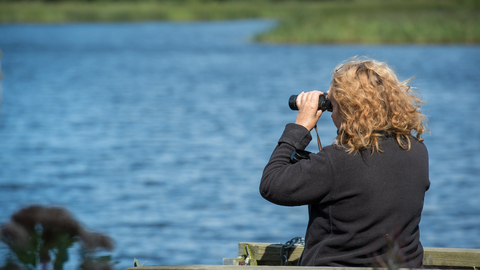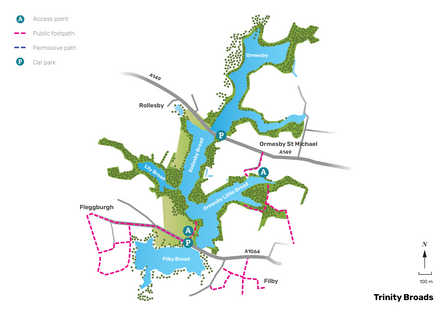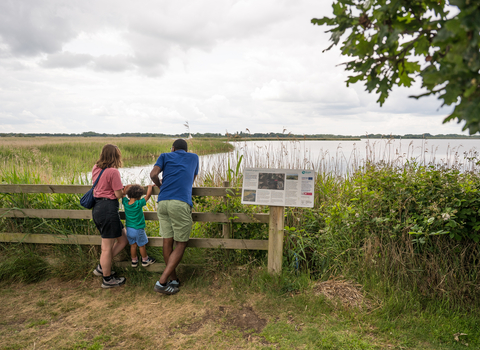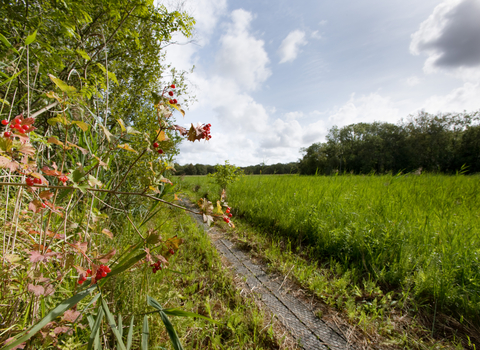
Trinity Broads aerial image (credit: Mike Page)

Volunteer at Trinity Broads (credit: Matthew Roberts)
Trinity Broads
Location
Know before you go
Dogs
When to visit
Opening times
Every day, all year round, 8am - 6pm.Best time to visit
All year roundAbout the reserve
The site is owned by Essex & Suffolk Water and managed in partnership with NWT. Other members of the partnership are Natural England, Environment Agency and Broads Authority.
This collection of five broads provides the domestic water supply to nearby villages, as well as Great Yarmouth and the surrounding area. Despite their main purpose, the pristine water and rich margins of the Trinity Broads are fantastic for aquatic plants including several rare species of stonewort, as well as holly-leaved naiad, which grows only in the Norfolk Broads. Other scarce plants such as cowbane still occur here, and bulrush grow in abundance around the edges of the broad.
The Trinity Broads are also important to wintering wildfowl, with large numbers of coot and duck, including goldeneye and shoveler, using the site in winter. Being close to the coast means that sea duck, such as scaup and long-tailed duck, are regularly found here, particularly after rough weather and strong easterly winds. Otter and water vole thrive in this watery haven and osprey, peregrine and white-tailed eagle sometimes soar with the marsh harriers and summer hobbies.
In partnership with Essex & Suffolk Water, we ensure the sensitive management of the fenland, reedbeds and woodlands that encircle the broads, as well as carrying out regular monitoring of the wildlife.
Habitat
Contact us
Environmental designation

Illustrated map of Trinity Broads.


